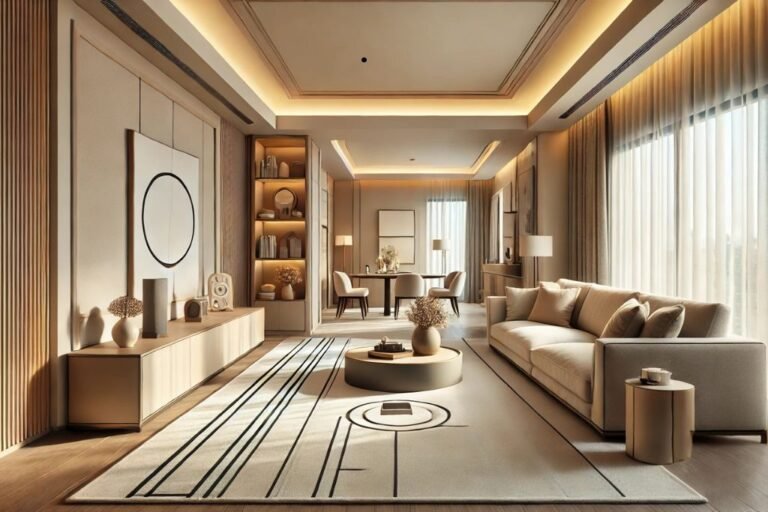Arranging furniture in a room is more than just making it look good. Thoughtful placement can guide how people move through your space, creating a smoother flow of traffic. Whether you’re working with a small apartment or a large living room, strategic furniture placement makes a big difference. Let’s explore how you can use furniture to control traffic flow effectively.
1. Start with a Clear Pathway
The first step is identifying the natural paths people will take. For example, if a room connects to a hallway or another room, make sure those entry and exit points are unobstructed. Avoid placing bulky furniture, like sofas or large tables, directly in these pathways.
Tip: Leave at least 3 feet of clearance for walkways to ensure comfortable movement.
2. Arrange Furniture with Function in Mind
Think about how the room will be used. In a living room, arrange seating to encourage conversation while keeping walkways clear. In a dining room, ensure chairs can be pulled out without blocking movement. Each piece should serve its purpose without disrupting traffic.
3. Use Rugs to Define Zones
Rugs are a great tool for creating defined areas within a room. For example, a rug under a coffee table anchors the seating area, signaling where people should sit and relax. This helps guide movement around the space rather than through it.
4. Place Large Pieces Strategically
Large furniture like sofas, bookshelves, or cabinets should be positioned along walls or in corners. This keeps the center of the room open for easy movement. Avoid placing large items where they might become obstacles.
5. Use Visual Cues
Add subtle visual cues to guide traffic. For instance, position a console table near the entrance with a decorative lamp or vase. This draws attention and gently directs people into the room.
6. Create Multiple Access Points
In larger rooms, provide more than one way to move through the space. For example, avoid creating a single narrow path by placing furniture in a way that allows people to enter and exit from different points.
7. Keep Entry Points Open
Never block doors or windows with furniture. These areas naturally attract movement and light, so keeping them open maintains a sense of flow and spaciousness.
8. Experiment and Adjust
Every room is different, so don’t be afraid to move things around. Test different arrangements to see what feels most comfortable. Sometimes, small tweaks can make a big difference in how a space functions.
9. Consider the Room’s Shape
Rectangular rooms often benefit from furniture arranged along the longer walls, while square rooms might feel more balanced with furniture centered. Match your layout to the room’s proportions to maintain harmony.
10. Add Space-Saving Furniture
If you’re dealing with a small space, opt for multi-functional furniture like ottomans with storage or foldable tables. These pieces keep the room open while still providing utility.
Final Thoughts
Furniture placement isn’t just about aesthetics; it’s about functionality. A well-arranged room allows people to move freely, creating a space that’s both inviting and practical. By planning thoughtfully and making adjustments as needed, you can master the art of controlling traffic flow with furniture placement.

My name is David from Houston, Texas (USA) I’ve spent the last 10 years working with some of the biggest furniture brands in the United States. I’ve helped thousands of customers and learned what makes furniture strong, stylish, and worth your money.
